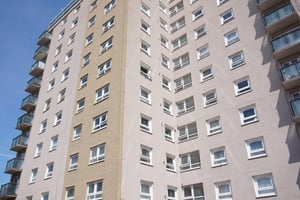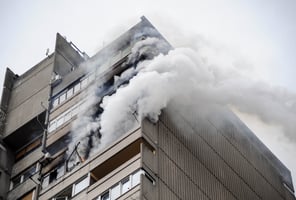
Surveys
Surveys act as the foundation of all fire compliance and fire stopping measures. By identifying any weaknesses or hazards within a premises, building managers can put a plan in place to minimise or remove any risks.
Thorough Surveys to Keep Your Buildings Safe
Surveys act as the foundation of all fire compliance and fire stopping measures. By identifying any weaknesses or hazards within a premises, building managers can put a plan in place to minimise or remove any risks.
Following any of our surveys, we provide our clients with a specification and estimate of costs document, completely free of charge. This allows our customers to plan for any remedial work and budget accordingly.
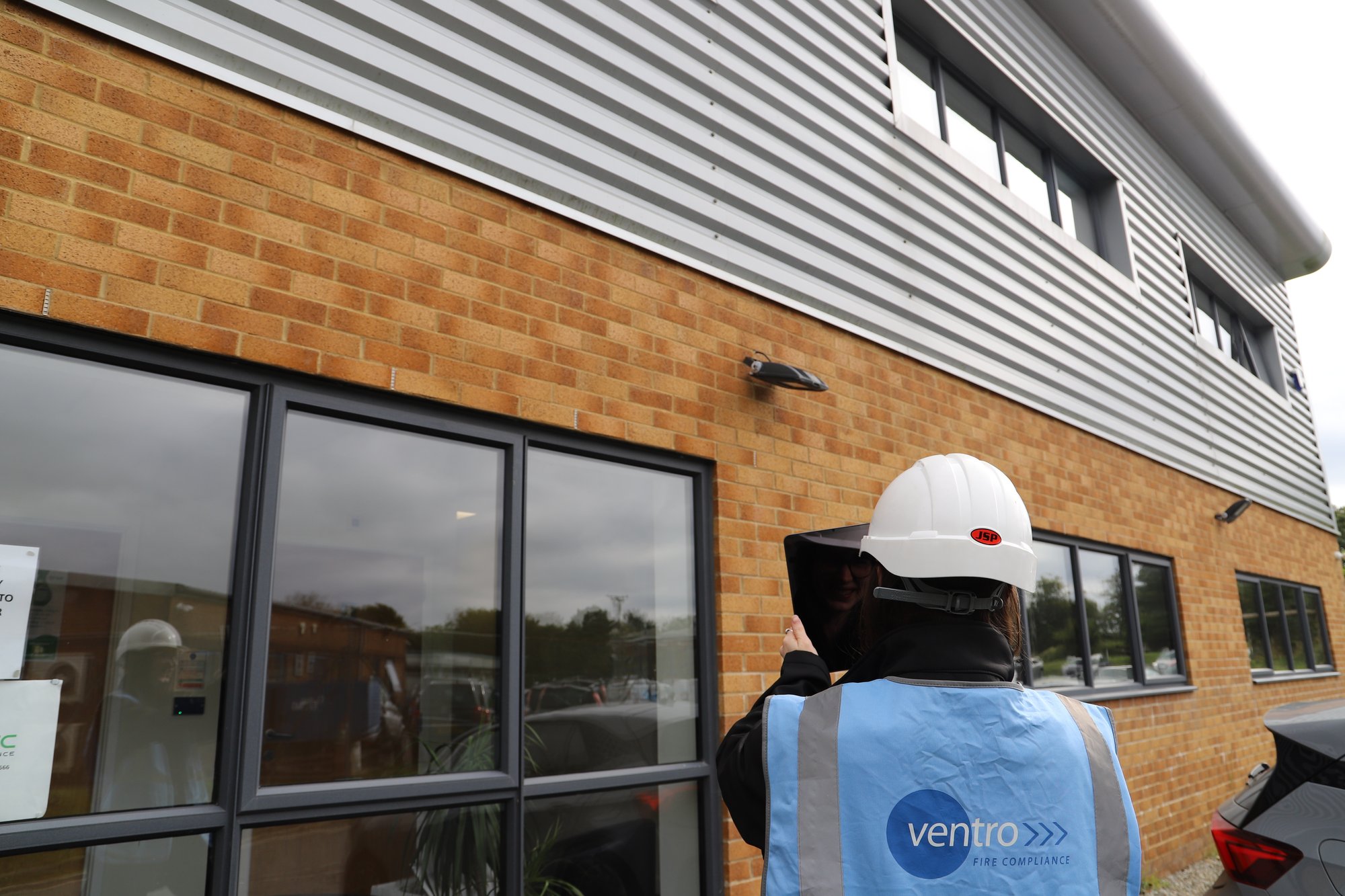
52
Point Criteria Check On Fire Doors To Ensure Compliance
10
Years Experience in Carrying out Surveys for Fire Safety
Available Surveys:
- Detailed Fire Door Surveys
- Basic Fire Door Surveys
- Fire Compartmentation Intrusive Surveys
- Fire Compartmentation Invasive Surveys
- AOV Surveys
- Cavity Barrier Inspections
- Bin Chute Surveys
- Damper Surveys
- Emergency Lighting Assessments
- Fire Alarm Assessments
- Warden Call Assessments

How we carry out surveys
A fire safety survey thoroughly assesses the overall safety of a building and identifies any potential breaches or areas that are failing to meet fire compliance standards.

- During the survey, we'll assess all building areas where required, including beneath raised doors, above suspended ceilings and roof spaces.
- Once we've collated our findings and presented them back to you, we can provide a breakdown of any remediation works required. this will follow the survey so it is simple and easy to follow.
- Issue tagging is a crucial aspect of fire safety surveys because it provides a structured and organised way to identify and document issues or deficiencies in the fire safety system. By assigning clear and concise tags to each identified issue, it becomes easier to communicate and prioritise the necessary repairs or upgrades.
Compartmentation Surveys
The importance of compartmentation surveys lies in their ability to identify any deficiencies in a building's fire-resistant barriers. Over time, these barriers can become damaged or compromised, reducing their effectiveness in containing a fire. For example, doors may not close properly, walls may have penetrations that allow smoke and flames to spread, or fire dampers may not be working correctly.
By conducting compartmentation surveys, building owners and managers can identify these issues and take corrective action to ensure that the fire-resistant barriers are working as intended. This can include repairing or replacing damaged barriers, installing new barriers in areas where they are missing, or upgrading existing barriers to meet current fire compliance and safety standards.
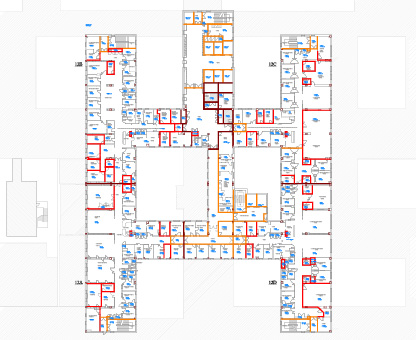
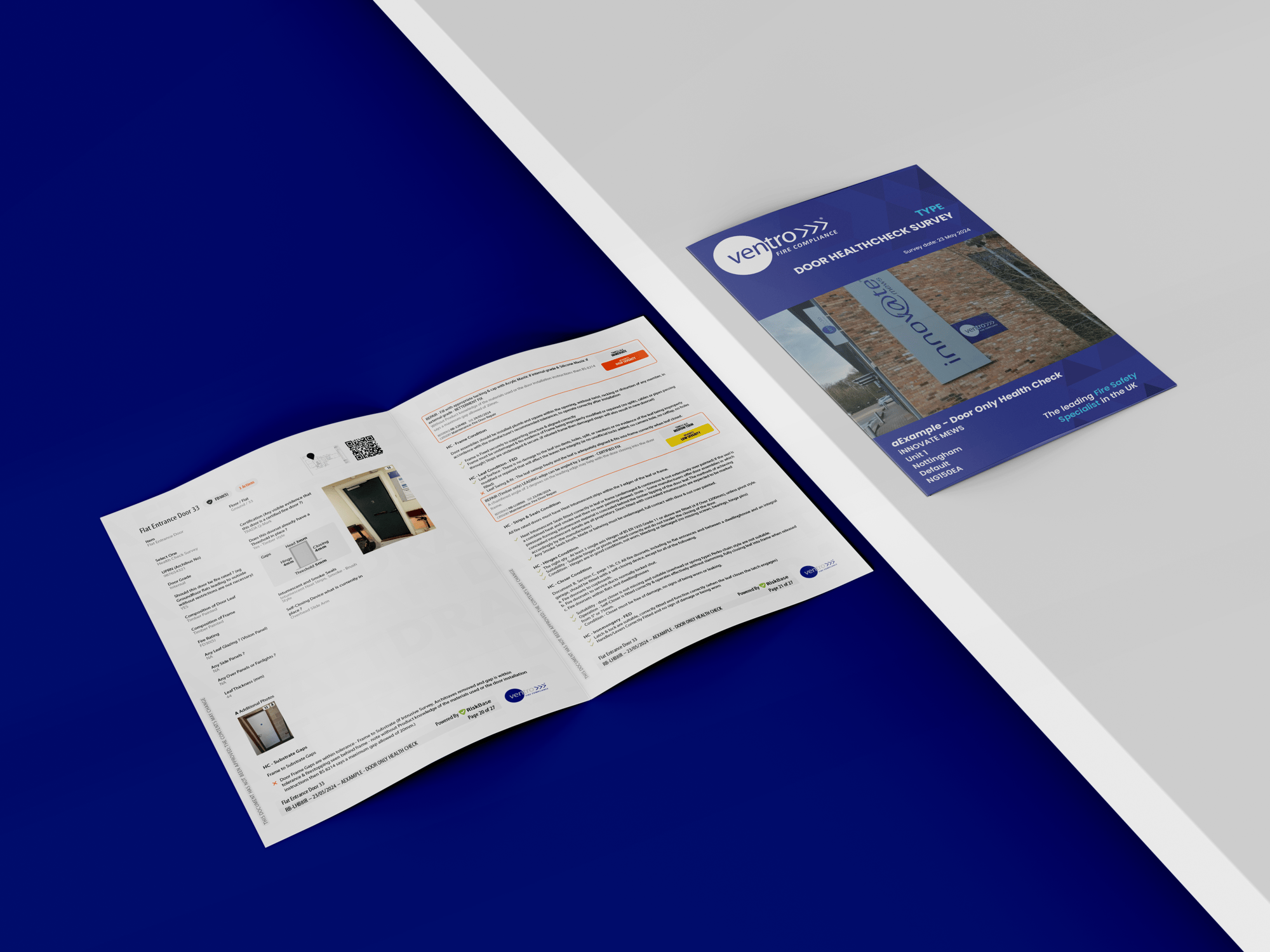
Fire Door Surveys
Based on our knowledge and experience within fire safety, we carry out fire door surveys based on the Ventro Fire Door Inspection criteria. Each aspect and asset is assessed and labelled on-site for ease of cross-referencing with the report to demonstrate findings.
The image to the right shows what the initial report would look like. The Ventro Fire Door Inspection Criteria is split into 10 categories which are then broken down into a total of the 39-point criteria check. This criteria check will vary depending on which survey we complete.
Each survey report will be broken down into 10 key categories
-
Property Details
-
Scope of Works
-
Methodology of Survey
-
Governing & Assisting Documents
-
Principal Findings
-
Expectations
-
Recommendations
-
Qualifications
-
Report Findings
-
Photography Reports




